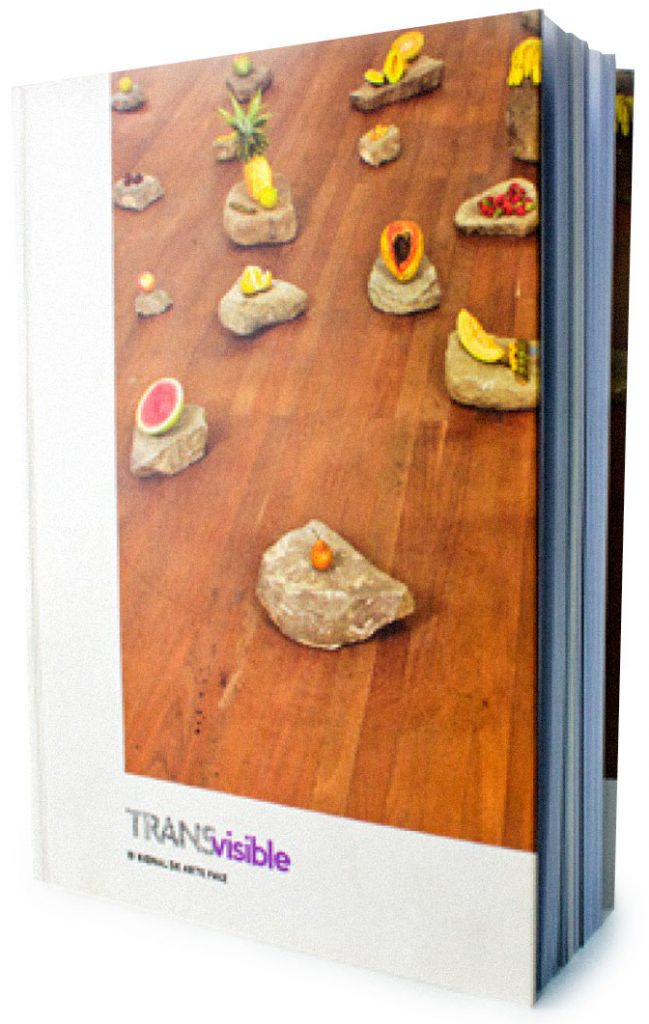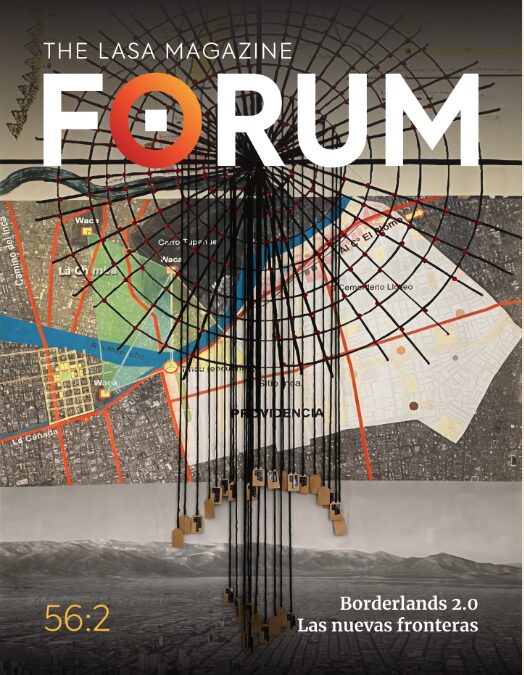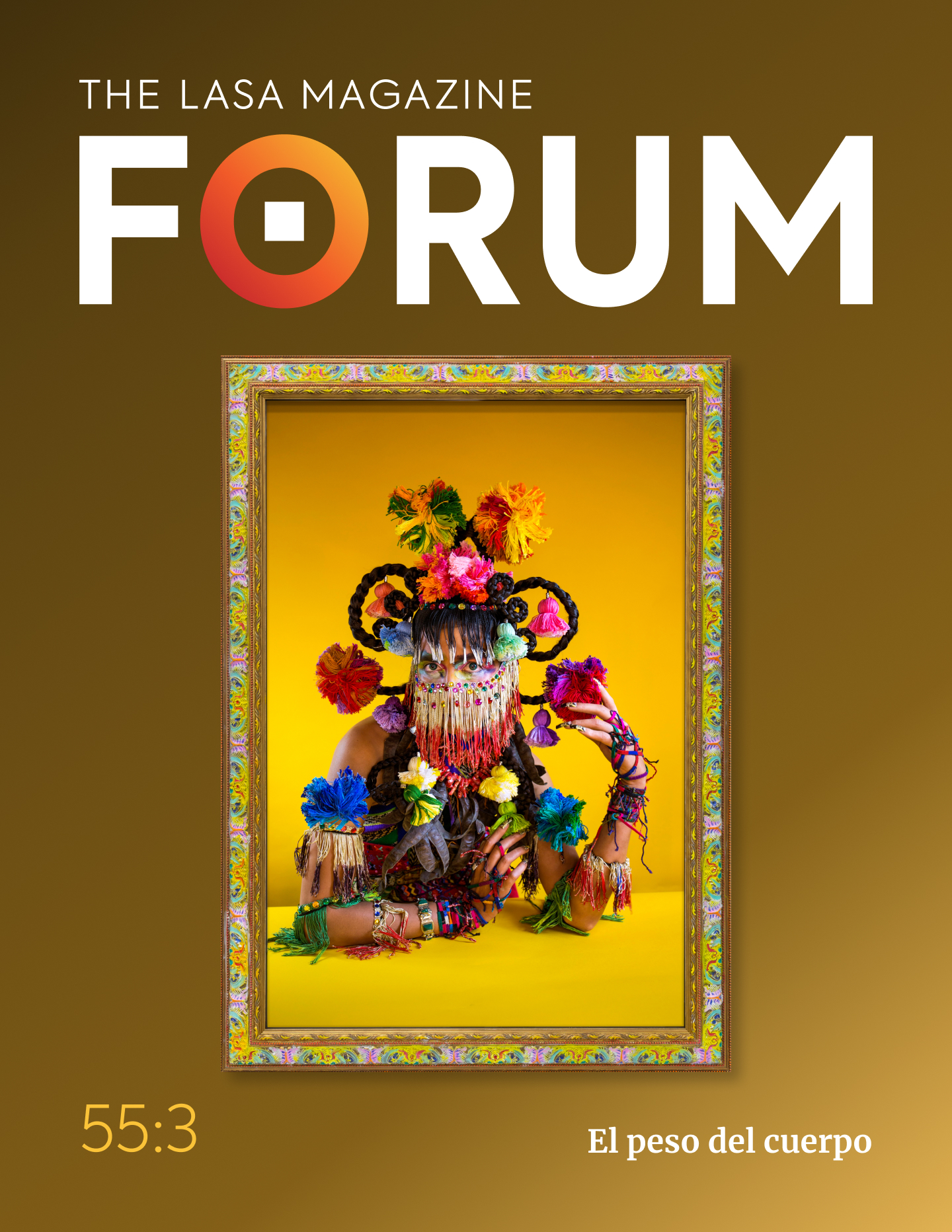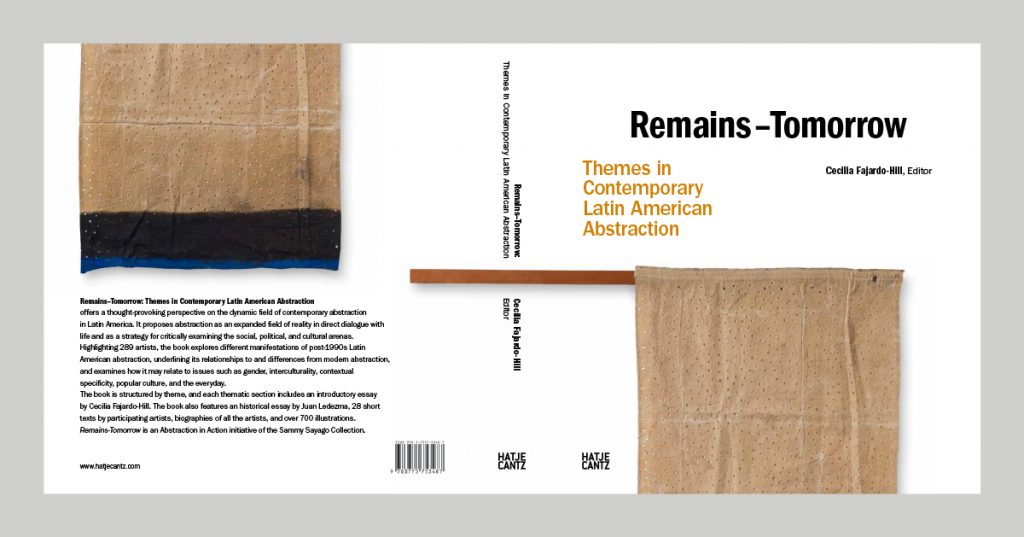Marissa Del Toro and Cecilia Fajardo-Hill, editors, Dossier, “Queering and Performing Boundaries of the Imaginary Xicanx Body”, Aztlán: A Journal of Chicano Studies, UCLA Chicano Research Studies Center, Los Angeles and Berkeley, CA:University of California Press,Volume 50, Number 1, Spring 2025.
This Dossier bring together essays on Latin American and Latinx artists who challenge gendered constructs and cultural expectations through their exploration of the imaginary body. Contents:
Introduction MARISSA DEL TORO AND CECILIA FAJARDO-HILL; Missing Bodies, Invocation, and Amalia Mesa-Bains’s Altar-Installations LAURA E. PÉREZ; Outrageous and Unconventional: Erotic Connotations in the Works of Gabriela Ruiz and Tamara Santibañez MARISSA DEL TORO; Love Is in Abundance: Rituals of Care by Edgar Fabián Frías and Jessica Carolina González ANA BRIZ; Laura Aguilar’s Nature Self-Portrait Series: Where the Body Meets the Earth, MAYA STROHMEIER; Stitching Visibility Through the Horizon of Crafts: Gloria Martinez-Granados CHRISTIAN RAMÍREZ; Proudly Defiant, Glittering Cicatrices: The Subversive Work of José Villalobos and Moisés Salazar ANGÉLICA BECERRA; MARISSA DEL TORO AND CECILIA FAJARDO-HILL: Materiality: Artwork by rafa esparza, Leslie Martinez, Vick Quezada, and Jenelle Esparza
Imaginary Body: Artwork by Frances Salomé España, Ken Gonzales-Day, and Teddy Sandoval
Copyright UC Regents
Cecilia Fajardo-Hill and Javier Guerrero, editors, LASA Magazine Forum, “Borderlands 2.0 las nuevas fronteras”, issue 56.2, Pittsburgh, PA: University of Pittsburgh. Spring 2025.
This is the final issue of LASA Forum under the presidency of Javier Guerrero. This edition features the dossier “Borderlands 2.0: Las nuevas fronteras,” co-edited by Cecilia Fajardo-Hill and Javier Guerrero, and published following the LASA2025 Congress in San Francisco, whose theme was Poner el cuerpo in Latinx America. The editors write: “To inhabit the borderlands is to exist in a space of tension and possibility where violence and resistance, erasure and memory, marginalization and creativity coexist. Borderlands 2.0 is the utopia of the futuro anterior, a space that acknowledges the unresolved past and its erasures as sites of potential becoming”. For this reason, they have invited scholars, practitioners and artists to reflect on “the violent nature of borders and uncovering the emancipatory potential of life at the intersections of language, gender, race, class, ethnicity, and embodiment”.
Contributors to the dossier include, alongside Javier Guerrero and Cecilia Fajardo-Hill, Anita Huízar-Hernández, Gabriella Soto, Yana Stainova, Erika Hirugami, Isabella Vergara, Tatiana Flores, Voluspa Jarpa, Luis Guzmán, Pablo Biderbost/María Puerta, Américo Mendoza-Mori, Charlie D. Hankin, Christina H. Lee, María José Arjona, Paloma Checa-Gismero, Debra A. Castillo, and Erika M. Almenara.
In addition to the articles in the dossier, we introduce two artistic interventions that took place during the last Congress by María José Arjona and Enrique Enriquez, and a farewell to distinguished historian and former LASA president Marysa Navarro Aranguren.
Este es el último número de LASA Forum bajo la presidencia de Javier Guerrero. Esta edición presenta el dossier “Borderlands 2.0: Las nuevas fronteras”, coeditado por Cecilia Fajardo-Hill y Javier Guerrero, y publicado tras el Congreso LASA2025 en San Francisco, cuyo tema fue Poner el cuerpo in Latinx América. Los editores escriben: “Habitar las fronteras es existir en un espacio de tensión y posibilidad donde coexisten violencia y resistencia, borramiento y memoria, marginalización y creatividad. Borderlands 2.0 es la utopía del futuro anterior, un espacio que reconoce el pasado no resuelto y sus borramientos como sitios de devenir potencial”. Por esta razón, han invitado a académicos, profesionales y artistas a reflexionar sobre “la naturaleza violenta de las fronteras y revelar el potencial emancipador de la vida en las intersecciones del lenguaje, el género, la raza, la clase, la etnicidad y el encuerpamiento”.
Entre los colaboradores del dossier se incluyen, además de Javier Guerrero y Cecilia Fajardo-Hill, Anita Huízar-Hernández, Gabriella Soto, Yana Stainova, Erika Hirugami, Isabella Vergara, Tatiana Flores, Voluspa Jarpa, Luis Guzmán, Pablo Biderbost/María Puerta, Américo Mendoza-Mori, Charlie D. Hankin, Christina H. Lee, María José Arjona, Paloma Checa-Gismero, Debra A. Castillo, y Erika M. Almenara.
Además de los artículos del dossier, se introducen dos intervenciones artísticas que acontecieron durante el pasado Congreso de María José Arjona y Enrique Enriquez, y una despedida a la destacada historiadora y expresidenta de LASA Marysa Navarro Aranguren.
https://forum.lasaweb.org/articles/56-2/otras-selva-possibles
Drag Kings: An Archeology of Spectacular Masculinities in Latinx America, eds. Nathalie Bouzaglo and Javier Guerrero, Chile: Metales Pesados, 2025.
Ensayo Cecilia Fajardo-Hill: “Performar el cuerpo marrón”. El ensayo discute la obra de: Laura Aguilar, Nao Bustamante, Judith F. Baca, Cyclona (Robert Legorreta), rafa esparza, y Patssi Valdez.
Anonymous Was A Woman: The First 25 Years, edited by Nancy Princenthal and Vesela Stretenovic, co-published by Hirmer and the the Grey Art Museum at New York University, 2025
The publication, Anonymous Was A Woman: The First 25 Years is a book commemorating the Anonymous Was A Woman award recipients and celebrating the impact of women artists on contemporary art. It was published in conjunction with an exhibition of the same name, which opened on April 1, 2025, at the Grey Art Museum. The book features essays by prominent art historians and critics, with essays by Nancy Princenthal, Vesela Sretenović, Valerie Cassel Oliver, Alexandra Schwartz, Cecilia Fajardo-Hill, Jenni Sorkin, and Gaby Collins-Fernández. The book includes biographical information and artwork selections from all 251 recipients of the Anonymous Was A Woman award, spanning from 1996 to 2020.
https://secure.touchnet.com/C21125_ustores/web/product_detail.jsp?PRODUCTID=1060&SINGLESTORE=true
“Body Fragments/ Uncontrolled Bodies” in LASA Forum, Dossier: “El peso del cuerpo”, Volume 55, Issue 3, October 2024.
This short essay focuses on artworks by Latin American women that probe boundaries using body parts and fluids. I argue –paradoxically–that in pieces by experimental artists after the 1960s, body fragments such as cells, the mouth, the eyes, and the vagina, as well as bodily fluids such as menstrual blood stand not only for an uncontrolled and reimagined body, but a reconceptualized social body. The works I include are only a fraction of what exists, and they should be thought of as an invitation to explore the powerful imaginary of a rich iconography of the female body.
Read more: https://forum.lasaweb.org/articles/55-3/body-fragments-uncontrolled-bodies
“Celia Birbragher’s Latin American vision” in Paving Roads for Latin American Art: The Pioneering Work of Celia Birbragher. Miami: Coral Gables Museum, 2023.
Cecilia Fajardo-Hill “Radical Women: Latin American Art, 1960–1985 in Retrospect and Going Forward” in Dialogues: The Future of Radical Women: Feminism and Latin American Art, Edited by Elize Mazadiego and Eve Kalyva. LATIN AMERICAN AND LATINX VISUAL CULTURE, University of California Press, April 2023 Volume 5, Issue 2
Cecilia Fajardo-Hill, Political/Subjective Maps: Anna Bella Geiger, Magali Lara, Lea Lublin, and Margarita Paksa. New York: The Institute for Studies on Latin American Art (ISLAA), 2022
Cecilia Fajardo-Hill, Political/Subjective Maps: Anna Bella Geiger, Magali Lara, Lea Lublin, and Margarita Paksa. New York: The Institute for Studies on Latin American Art (ISLAA), 2022
Cecilia Fajardo-Hill, Richard Garet y Diego Masi, Transhemisférico Richard Garet – Diego Masi. Montevideo: Museo Gurvich, 2022.
Remains–Tomorrow: Themes in Contemporary Latin American Abstraction, 2022
Editor: Cecilia Fajardo-Hill
This book offers a thought-provoking perspective on the dynamic field of contemporary abstraction in Latin America. It proposes abstraction as an expanded field of reality in direct dialogue with life, and as a strategy for critically examining social, political, and cultural concerns. Featuring 280 artists, the book explores different manifestations of post-1990s Latin American abstraction and their underlying relationships to and differences from modern abstraction. Essays by Cecilia Fajardo-Hill, Juan Ledezma, 28 texts by participating artists, as well as biographies by Amalia Caputo, and over 700 illustrations, examine issues such as gender, interculturality, and popular culture.
English. 552 pp., 771 ills. Designed by Aixa Díaz.
Published by Hatje Cantz.
Editor Remains Tomorrow: Themes in Contemporary Latin American Abstraction. Berlin: Hatje Cantz, Fall 2022.
More information:
https://www.hatjecantz.de/remainstomorrow-8323-1.html
The book surveys different manifestations of post 1990s Latin American abstraction, examining issues such as transculturality, gender, popular culture, and everyday life, thus moving away from a modernist tradition in abstraction. A project of Abstraction in Action published by Hatje Cantz, this book features 280 artists.
El libro revisa diferentes manifestaciones de la abstracción latinoamericana posterior a los años 1990, examinando temas como la transculturalidad, el género, la cultura popular y la vida cotidiana, alejándose así de una tradición modernista en la abstracción. El libro es un proyecto de Abstraction in Action, publicado por Hatje Cantz, que incluye a 280 artistas.
“Her Abstractions: Expanded Modernisms in Latin America”, Les Cahiers du musée national d’art moderne , no. 159, Centre Pompidou and AWARE, Paris, Spring of 2022.

“The Gilft of Art”, ReVista Harvard Review of Latin America, Spotlight on Covid-19, Covid April 2022, April 21, 2022.
more information: https://revista.drclas.harvard.edu/the-gift-of-art/
Absence /Presence: Latinx and Latin American Artists in Dialogue, New York: Another Space. 2021 digital publication.
more information: https://www.anotherspace.org/absence-presence
“La mujer en el arte”/ “Woman/women in art,” in Una Visión, una Colección una Mujer, edited by Axel Stein, New York: Editorial El Cardón, 2021
“Inner /Outer Exile in Contemporary Venezuelan Art” in dossier País Portátil: Contemporary Venezuelan Writing and Arts. Review 103: Literature and Arts of the Americas. Volume 54, Issue 2 (2021) Routledge in association with The City College of New York, CUNY. 2022
more information: https://www.tandfonline.com/doi/full/10.1080/08905762.2021.1990580
“Mujer, clase y género” in UTOPÍA 7 Revista de crítica cultural – Tenemos que hablar de Latinoamérica, Spring 2021.
“Performative Bodies: Artists/Spectators. Curating Radical Latina and Latin American Women artists” in The Methuen Drama Companion to Performance Art, Edited by Bertie Ferdman and Jovana Stokic, London and New York: Bloomsbury Press, 2020
“Gender, Race, and Sexuality re Latina and Latin American Women Artists” in Art History in a Global Context: Methods, Themes and Approaches, Edited by Ann Albritton and Gwen Farrelly, Hoboken, New Jersey: Wiley-Blackwell. 2020
“Mujeres Radicales y Feminismo” (co-authored with Andrea Giunta) and international editors of Feminismos, Errata# 17, Bogotá, 2018.
more information: https://revistaerrata.gov.co/contenido/mujeres-radicales-y-feminismo
“O corpo emancipado –Radical Women: Latin American Art, 1960-1985” in Histórias da sexualidade: Antologia, Edited by Adriano Pedrosa and André Mesquita, MASP, Sao Paulo: MASP, 2017
Cecilia Fajardo-Hill with Andrea Giunta, editors, Radical Women: Latin American Art, 1960-1985, Los Angeles: Hammer Museum, University of California, and Munich, London and New York: Delmonico Books – Prestel, 2017

Essays in publication: “The Invisibility of Latin American Women Artists: Problematizing Art Historical and Curatorial Practices” and “Singular Women: Experimental Art in Venezuela”.
more information: https://hammer.ucla.edu/radical-women/essays
“Latina Art through the Lens of Radical Women: Latin American Art, 1960-1985” (co-authored with Marcela Guerrero), Diálogo, Center for Latino Research, DePaul University, Chicago, Fall 2017.
“The Body as Mediator of Violence” in Basta!, ed. by Claudia Calirman and Isabela Villanueva. New York: The Anya and Andrew Shiva Gallery and John Jay College of Criminal Justice, May 2016
Monochrome Undone, an Abstraction in Action exhibition, SPACE, Irvine. 2015
“Las ‘otras’ modernidades” in Modernidad y vanguardia: rutas de intercambio entre España y Latinoamérica (1920-1970), ed. By Paula Barreiro López and Fabiola Martínez Rodríguez. Madrid: Museo Nacional Centro de Arte Reina Sofía, Digital publication, 2015.
more information: http://www.museoreinasofia.es/publicaciones/modernidad-vanguardia-rutas-intercambio-entre-espana-latinoamerica-1920-1970
“Frames of Reference for Thinking about Specificities that Name Themselves in Guatemala’s Contemporary Art” in Transvisble: 19 Bienal de Arte Paiz. Guatemala City: Fundación Paiz, 2014.
Spanish pp. 84-96; English pp 354-361.
more information: https://fundacionpaiz.org.gt/product/19-bienal-de-arte-paiz-transvisible/

Spanish
English
2014: “Meaningful Abstractions,” Art Nexus 92. Miami: 2014.
Entry in Conceptos de arte contemporáneo, NC-arte, Bogota, 2014
Contemporary Abstraction in Latin America’, digital publications. Abstraction in Action, Summer 2013.
more information: http://abstractioninaction.com/contexts/contemporary-abstraction-latin-america/
Cecilia Fajardo-Hill, Fortunate Objects, Miami and Milan: Cisneros Fontanals Art Foundation CIFO and Charta, 2007.
Cecilia Fajardo-Hill, Forms of Classification: Alternative Knowledge and Contemporary Art. Miami: Cisneros Fontanals Art Foundation CIFO, 2006.
Cecilia Fajardo-Hill, editor, La Sala Mendoza: 45 años haciendo la historia del arte contemporáneo en Venezuela, Caracas: Sala Mendoza, 2002.
“Venezuela en los 90s: Contexto o Descontexto del arte?”, Políticas de la Diferencia. Arte Iberoamericano Fin de siglo, ed. by Kevin Power. Valencia, Spain: Generalitat, 2001.
“Mi Casa no es mi casa: Imaginar los Transterritorial”, in I y II Foro Latinoamericano, ed. by Gerardo Mosquera. Badajoz: Museo Extremeño e Iberoamericano de Arte Contemporáneo, 2001.
Premio X Sala Mendoza, 2000
“¿Por qué son necesarias las alternativas al multiculturalismo?” Encuentro de Teoría y Crítica, Bienal de la Habana 2000: Uno más cerca del otro. Havana, 2000
Premio IX Sala Mendoza, 1998





